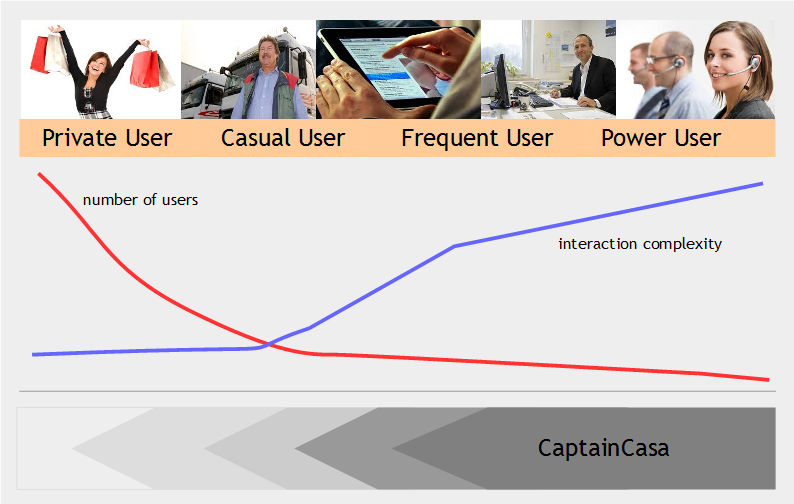Operational usage
Front-ends for operational and professional users of business application – that’s where CaptainCasa feels at home! This includes users like:
- employees
- workers
- power users
These users are using desktops, tablets and phones for working with dialogs, that reflect the complexity of their tasks.

“Simplicity first!” is a nice and important strategy for casual user scenarios. – Power user scenarios are different, sometimes: they require many information items on one or several screens, they require non-trivial interaction methods (from drag/drop to keyboard-oriented usage), they require a greater level of freedom to individually arrange their desktop workplace.
Efficient development and components tailored for specific industry scenarios
CaptainCasa Enterprise is used in many different application and industry scenarios. Examples:
- Back Office
- Controlling
- Financials
- Logistic planning & disposition
- Master data management
- Human Resources
- Visitor Management
- Shop floor / warehouse
- Manufacturing execution
- Warehouse execution
- Access control systems
- Management
- Status dashboards
- Charts & Analytics
- Information systems
Typical application development teams are small teams that develop and maintain their application over its whole lifecycle. Efficiency of development and a clear front-end architecture which allows to concentrate on application aspects are key to success.
Long term stability
The operational front-ends of a business applicaiton are not the ones that are re-written every 3-4 years. They are the ones to span life-cycles of more than ten years in many cases. The front-end architecture of CaptainCasa has proven that a proper decoupling of the client side is the best way to protect your front-end investments and to ensure that your application is not outdated with the next UI-hype!
CaptainCasa dialogs that were developed in 2007 (these times running in a Java Swing based frontend!) are still running in the HTML environment of the current CaptainCasa client – without any change neither to the layout nor to the Java application code.

